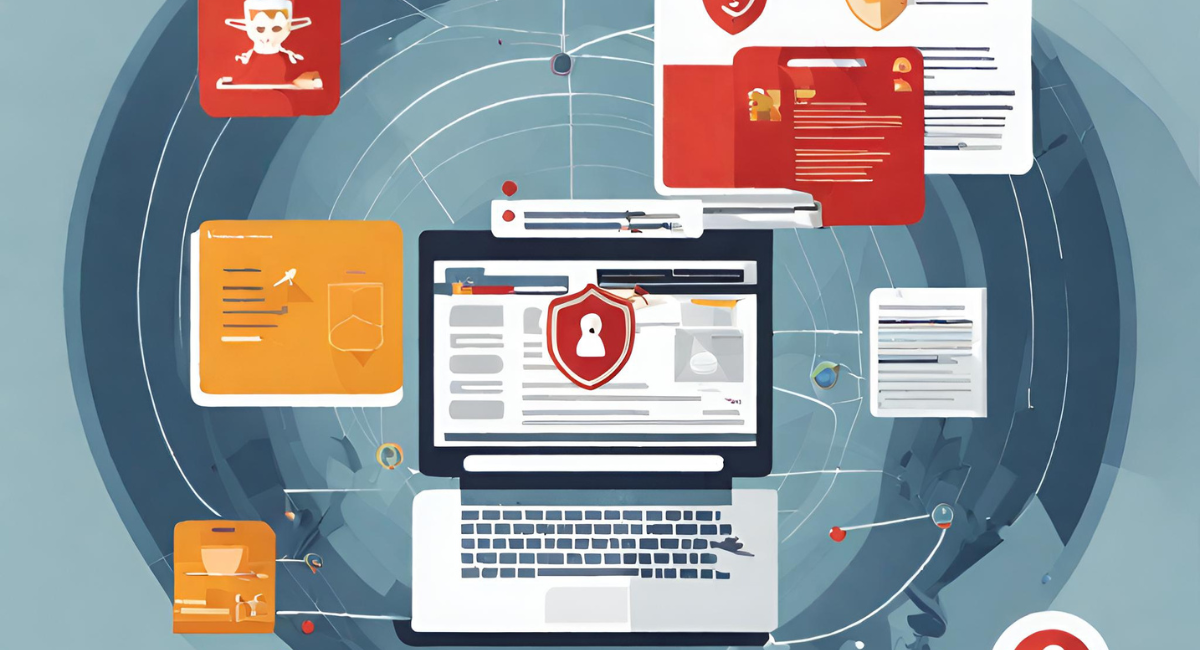To ensure the security of your data, it’s vital to implement password protection measures effectively. Strong passwords, consisting of a mix of characters and being at least 12 characters long, form the first line of defense. Two-factor authentication (2FA) adds an extra layer of security, and encryption ensures that even if your data is accessed, it remains unreadable without the encryption key. Don’t forget about securing data in the cloud, updating software regularly, and creating backups.
Why Data Security Matters?

Safeguarding Personal Information
Our digital lives are filled with personal information, ranging from birthdates and addresses to social security numbers and medical records. Protecting this information is about safeguarding our identities.
Preventing Identity Theft
When data falls into the wrong hands, it can lead to identity theft, a harrowing experience with far-reaching consequences. Criminals can use stolen personal information to open fraudulent accounts, make unauthorized purchases, and even commit crimes in your name.
Preserving Business Secrets
For businesses, data security is essential for maintaining competitive advantage. Trade secrets, proprietary information, and confidential client data must be protected to preserve business integrity.
Avoiding Financial Loss
Data breaches can result in staggering financial losses. Beyond the immediate costs of mitigating the breach and compensating affected parties, businesses often suffer long-term damage to their reputation, leading to decreased customer trust and revenue loss.
Constant Threats
The digital landscape is teeming with cyber threats, ranging from hackers seeking financial gain to state-sponsored espionage. Individuals and organizations are vulnerable to these threats without robust data security measures.
Protecting Against Ransomware
Ransomware attacks have become alarmingly common, where malicious actors encrypt your data and demand a ransom for its release. Data security measures can help prevent falling victim to such attacks.
Different Types of Threats to Security

1. Malware
Malware is a broad category of malicious software designed to harm or exploit computer systems and data. Common types of malware include viruses, worms, Trojans, spyware, and ransomware. Malware can infiltrate systems through email attachments, infected websites, or compromised software.
2. Phishing Attacks
Phishing attacks involve tricking individuals into revealing sensitive information, such as login credentials and financial data, by posing as trustworthy entities. Phishing emails, websites, and messages often mimic legitimate sources to deceive victims.
3. Distributed Denial of Service (DDoS) Attacks
DDoS attacks overload a target system or network with an overwhelming traffic volume, rendering it inaccessible to users. These attacks can disrupt online services, causing financial losses and damaging reputations.
Insider threats come from within an organization, from current or former employees or trusted individuals. These threats can be intentional (malicious insiders) or unintentional (negligent employees) and may involve data theft, sabotage, or unauthorized access.
5. Social Engineering
Social engineering exploits human psychology to manipulate individuals into divulging confidential information or taking actions that compromise security. Attackers may impersonate trusted personnel, use persuasive tactics, or engage in pretexting to achieve their goals.
6. Ransomware
Ransomware is malware that encrypts a victim’s data and demands a ransom for its decryption. Paying the ransom does not guarantee the safe return of data, and it encourages cybercriminals to continue their activities.
How to Password Protect and Secure Your Data?

Choosing Strong Passwords
The first step in data security is creating strong passwords. Weak passwords are the easiest way for attackers to access your data.
- Use a Mix of Characters: A strong password should include a combination of uppercase letters, lowercase letters, numbers, and special characters.
- Avoid Common Words: Avoid using easily guessable words like “password” or common phrases.
- Longer Is Better: Aim for passwords at least 12 characters long. Longer passwords are more secure.
- Passphrases: Consider using passphrases, which are longer phrases or sentences that are easy for you to remember but hard for others to guess.
Implementing Two-Factor Authentication (2FA)
Two-factor authentication adds an extra layer of security beyond just passwords. It typically involves something you know (your password) and something you have (a device or code).
- SMS Codes: Receive one-time codes via SMS.
- Authenticator Apps: Use apps like Google Authenticator or Authy to generate codes.
- Hardware Tokens: Physical devices that generate codes.
- Prioritize Accounts: Start with your most sensitive accounts, such as email and banking.
- Follow Setup Instructions: Each service may have slightly different setup instructions, so follow them carefully.
Encrypting Your Data
Encrypting your data ensures that even if someone gains access to it, they won’t be able to read it without the encryption key. Here’s how to encrypt your data:
Full Disk Encryption
- For Your Devices: Enable full disk encryption on your computer, smartphone, and other devices.
- Operating System Features: Most modern operating systems offer built-in encryption options.
Use Encrypted Messaging Apps
- WhatsApp: Provides end-to-end encryption for text messages and calls.
- Signal: Known for its strong encryption and privacy features.
Securing Cloud Storage
Many of us store our data in the cloud. While cloud storage offers convenience, it also presents security challenges.
- Unique Passwords: Use unique, strong passwords for your cloud storage accounts.
- Two-Factor Authentication: Enable 2FA for added security.
- Use Services with Client-Side Encryption: Some cloud storage providers offer client-side encryption, meaning your data is encrypted before uploading.
Regularly Update and Backup
Data security is an ongoing process. Regularly updating your software and creating backups of your data are essential steps to protect your information:
- Automatic Updates: Enable automatic updates for your operating system and software.
- Patch Vulnerabilities: Updates often include patches for known vulnerabilities.
- Backup Schedule: Set up a regular backup schedule to ensure you can recover your data if it’s ever lost or compromised.
- Backup Locations: Store backups in multiple locations, including external hard drives and cloud storage.
Conclusion
Protecting your data through password security and other measures is essential in today’s digital landscape. By choosing strong passwords, implementing two-factor authentication, encrypting your data, securing cloud storage, and maintaining regular updates and backups, you can significantly enhance your data security.
FAQs
1. What is two-factor authentication (2FA)?
Two-factor authentication (2FA) is an additional layer of security that requires users to provide two different authentication factors before gaining access to an account. These factors typically include something you know (like a password) and something you have (like a code generated by a mobile app).
How often should I update my passwords?
It’s a good practice to update your passwords regularly, at least every three to six months. However, if you suspect any security breach or if a service you use has been compromised, change your password immediately.
What is client-side encryption for cloud storage?
Client-side encryption encrypts data on the user’s device before it’s uploaded to a cloud storage service. This means that even the service provider cannot access the contents of your files without the decryption key.
Are longer passwords more secure?
Yes, longer passwords are generally more secure. A longer password provides more possible combinations, making it harder for attackers to guess or crack.
Can I use the same password for multiple accounts?
It’s not recommended to use the same password for multiple accounts. If one account is compromised, it could potentially jeopardize the security of all your accounts. Use a unique password for each account, or use a reputable password manager to generate and store complex passwords securely.
What should I do if I suspect a data breach or unauthorized access to my accounts?
If you suspect a data breach or unauthorized access to your accounts, take immediate action. Change the passwords for the affected accounts, enable two-factor authentication where possible, and review your account activity for any suspicious actions. Notify the relevant service providers and follow their instructions for reporting and resolving security incidents.
